This spring I participated in a Lenten book study at our church on conflict. The book was ‘Redeeming Conflict’ by Ann M. Garrido. As a conflict-averse person, it felt a little like stepping into the flame (okay, make that the fire). It was not at all comfortable or familiar to me, (but isn’t that what the Lenten season is supposed to be?) As a middle-child peacekeeper, I would much rather everybody just all get along, and then we wouldn’t even need this book or have these difficult conversations! The premise of the book is similar in that people may think there isn’t conflict in churches—that everybody all gets along in Christian love—but the author and the pastor who led our class knowingly pointed that out as a fallacy. Both also argued that conflict could be a ‘good thing!’ (Anybody else feeling uncomfortable?)
As a scientist, the subject of conflict was never on my list of classes. I readily believed that science is science is life—there are ideas (hypotheses), methods, protocols, experiments, data, results, and always those tentative conclusions with ‘further study is needed.’ There could be disagreement on the integrity of the hypothesis or the methodology, but it just meant that things needed to be honed and adjusted. And that there would always be more experiments! (I would like to acknowledge my naivete on conflict-free science with due respect to those of you who know that I am wrong about that.) As uncomfortable as the book topic was, it was also fascinating to me! I was stepping into a new universe of awareness. One of my favorite parts of the book was the idea that we tend to conflate the problem with the person we are having the problem with—the problem then becomes the other person or the other side, as in politics. Blame is a cheap and easy way to inflict pain and not take care of the issue. But we can step out of that by identifying the problem (which is often the hard part) and standing side by side with the person in unity to solve the problem. (I have shared this fascinating concept with a dozen people…and now all of you…in my enthusiasm that this should change the world!) But how do we thread that needle?
Last Sunday Chris and I went up to Crow Wing State Park by Brainerd. Most of the parks by major rivers in the state are still dealing with flooding, and when we checked the website, it said the south trails and the Red River Oxcart trail were impassable. We hadn’t been on the north trails for quite a while, so we set out to do that. We parked at the campground that had recently opened and headed north. The needle-like, green-as-can-be Sedge grass was blooming, as were the Bloodroots with their protective capes of curled leaves. Both are perennial pioneers of Spring.
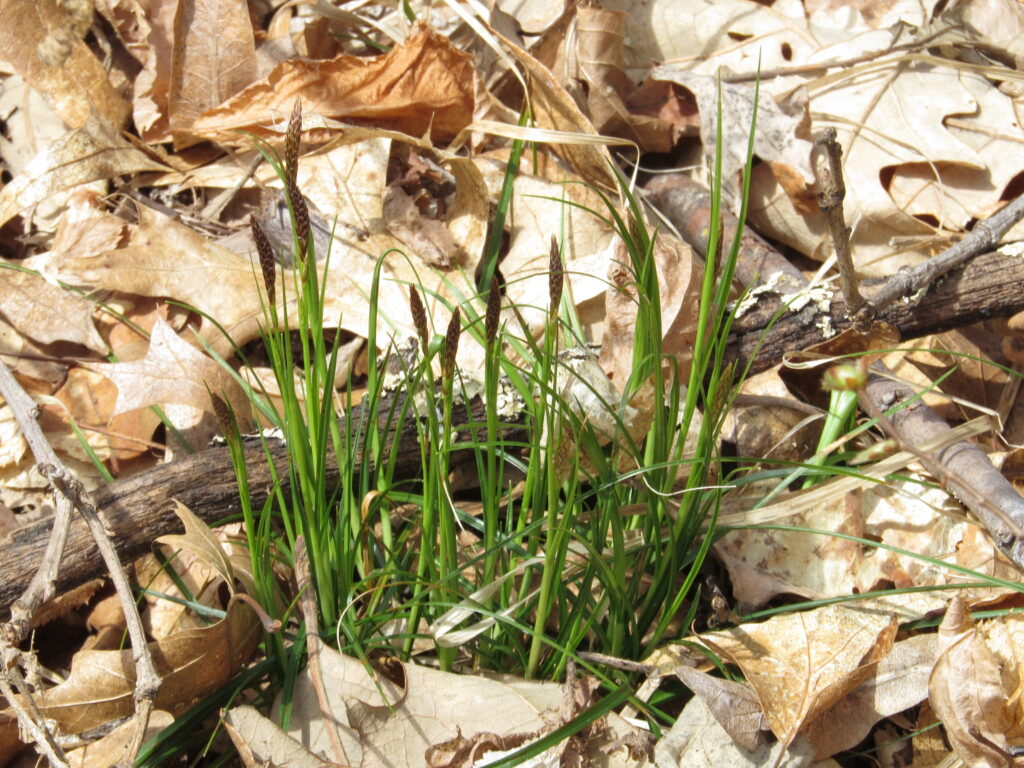
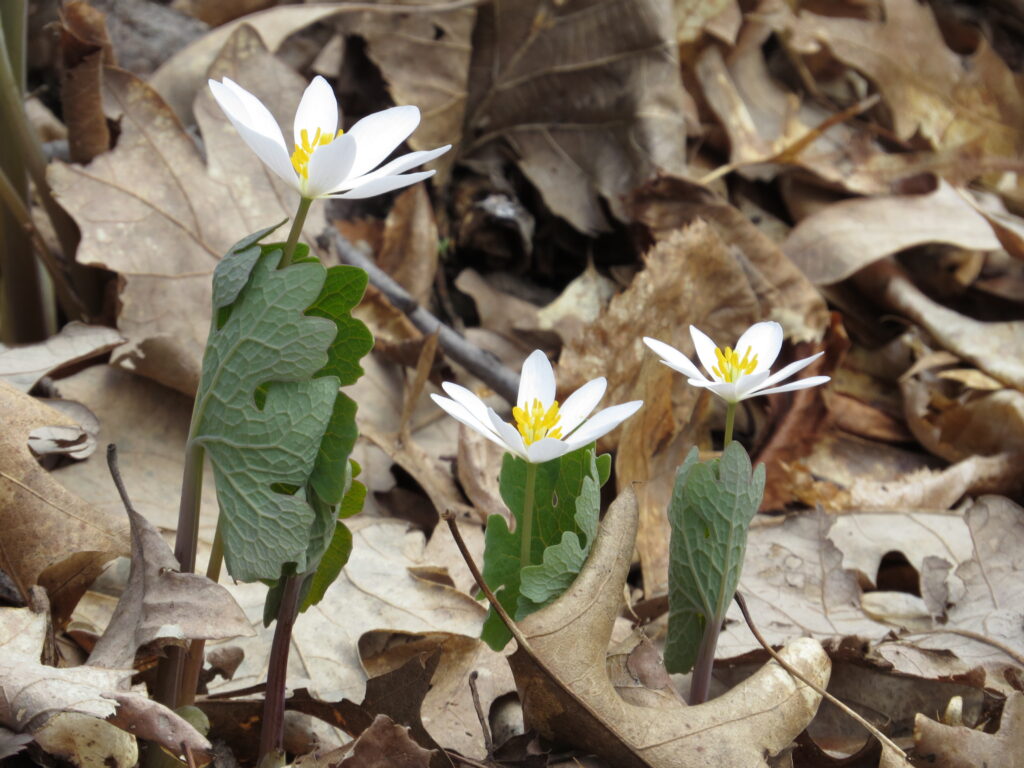
After following the ridge for a ways, we began to descend the hill towards the Mississippi River….and found that our trail had ended in the floodwaters. This was a problem even the bridge couldn’t resolve.
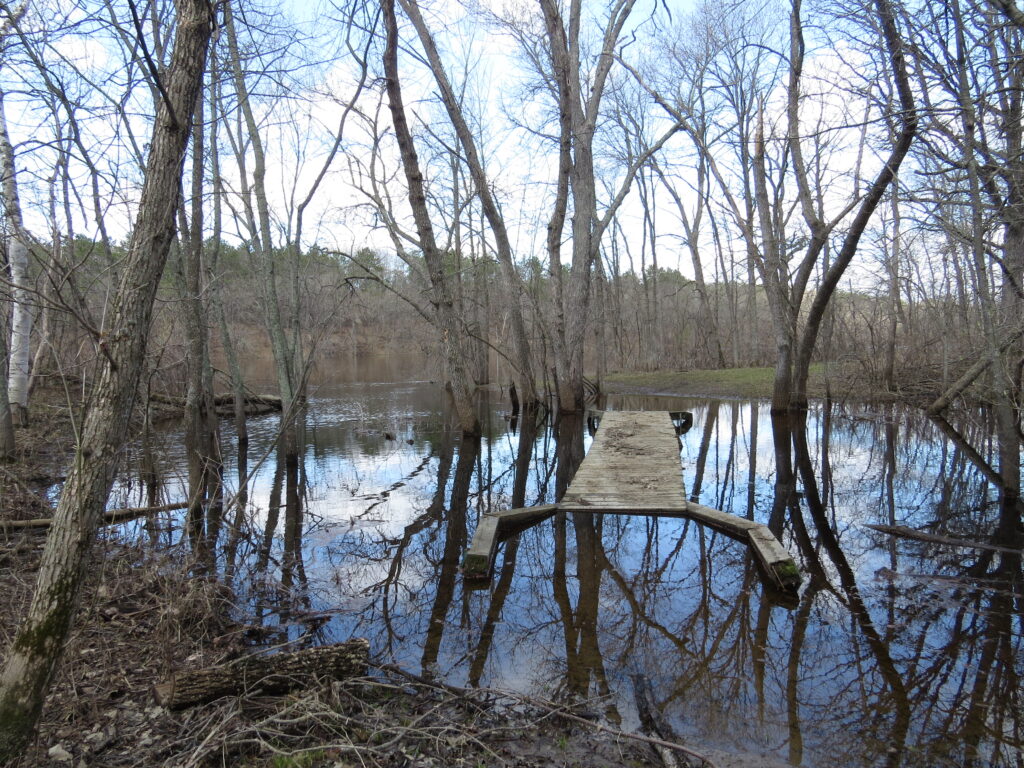
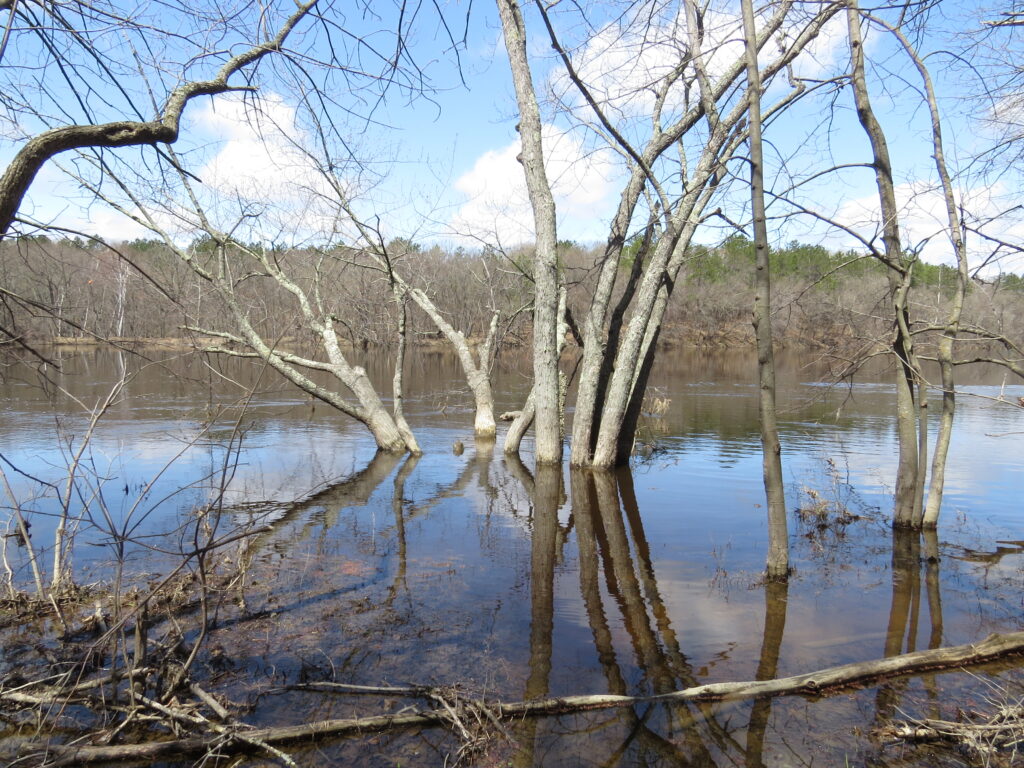
We backtracked, then took a trail by the River that led to the boat launch. Another Spring pioneer, Prairie Buttercup, shone its little ray of sunshine in the brown leaf litter.
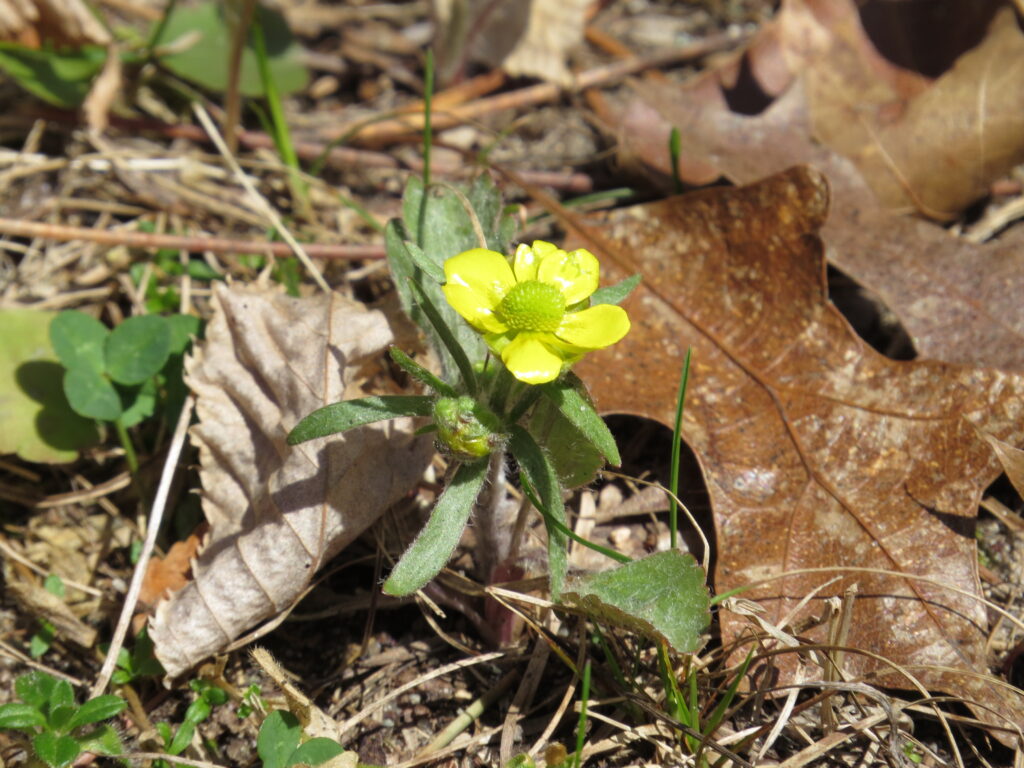
The River was full (of course, out of its banks), but the current had slowed from the fury of the tumultuous ice and snow melt. The puffy white clouds and the dark tree shadows were reflected on the water.
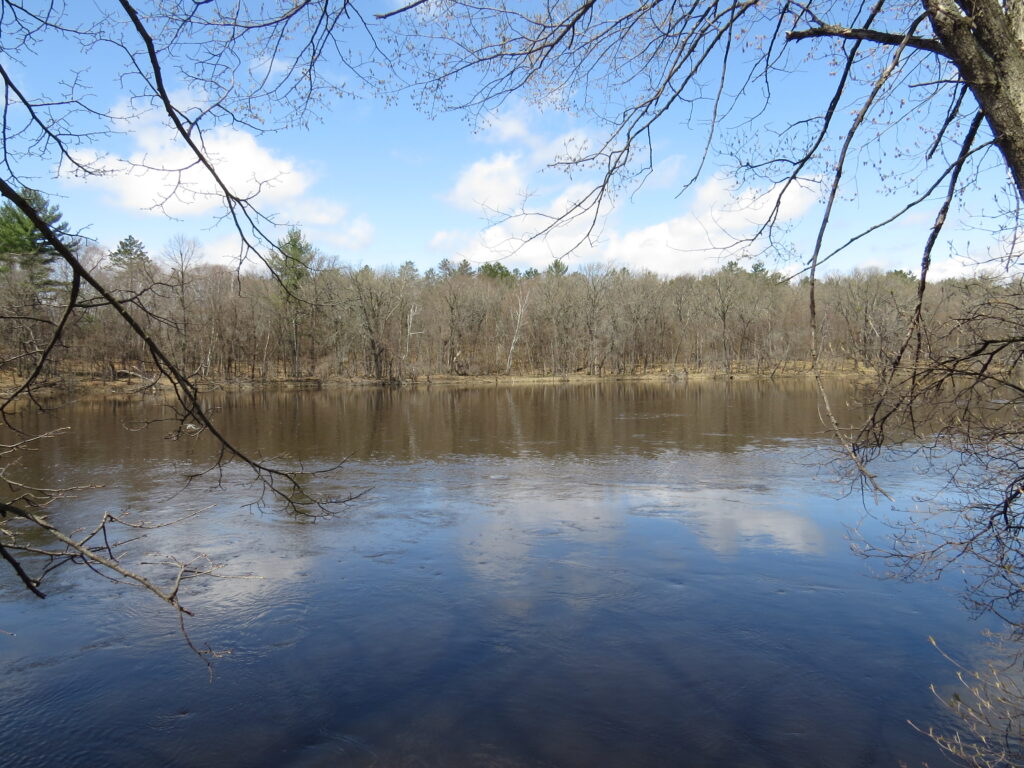
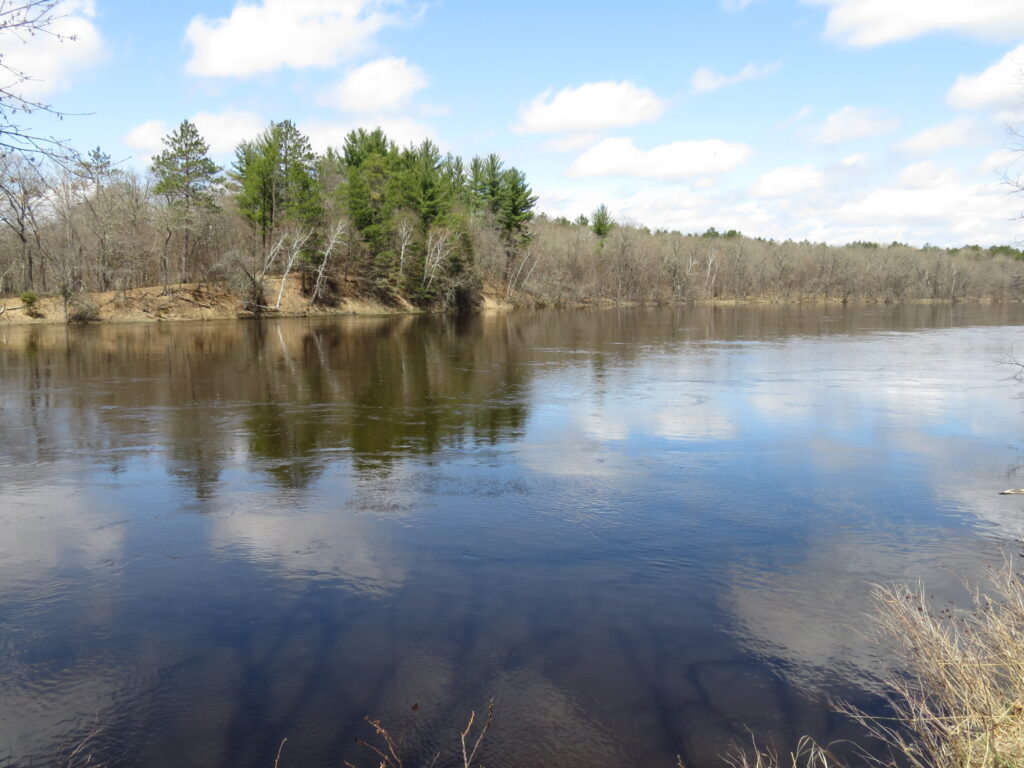
And then we got to the boat launch and parking lot. Both were full of water.
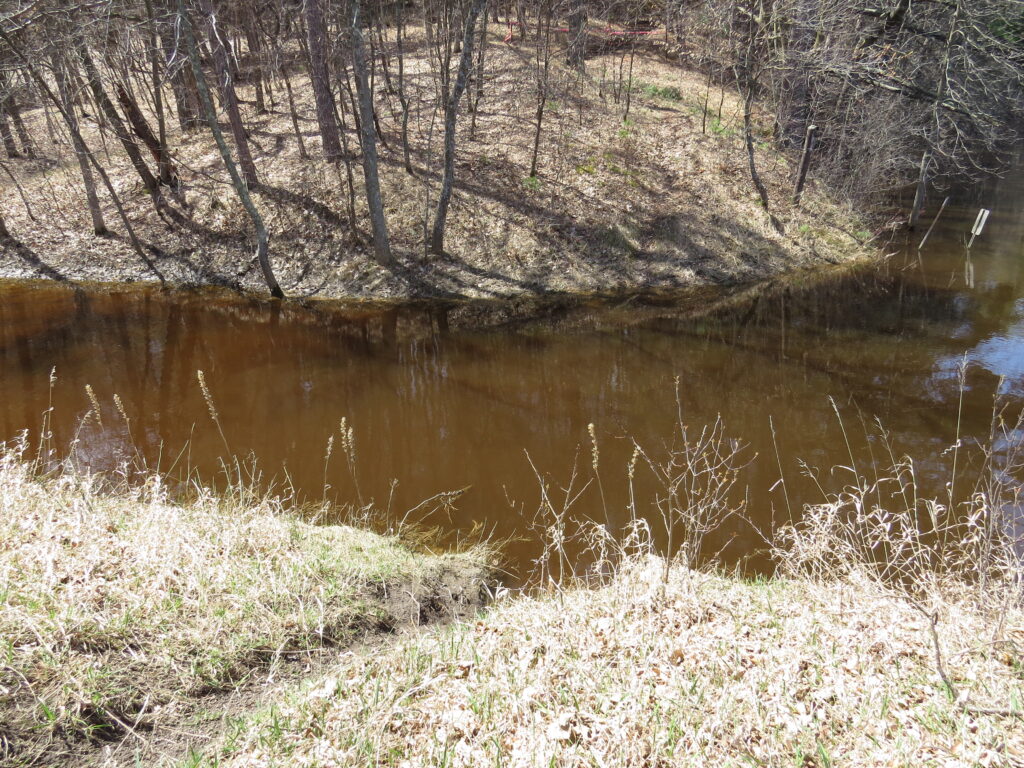
We backtracked again. We talked about how the River looked fairly calm, and suddenly Chris said, “Let’s walk out on that log.”
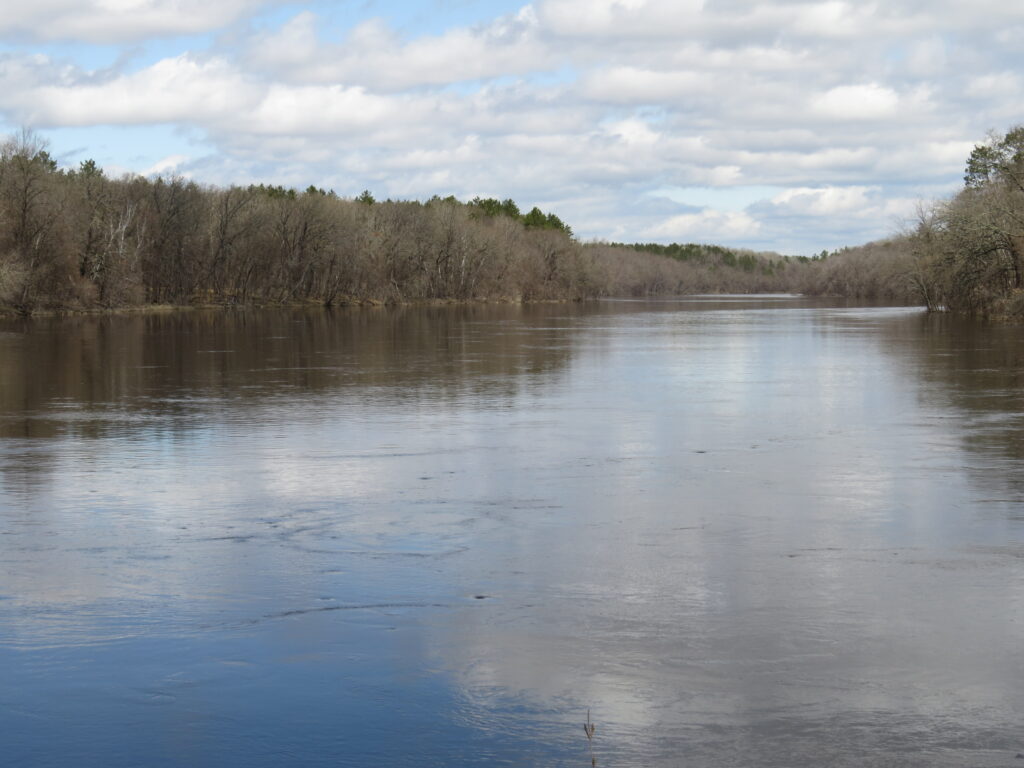
My first reaction was “You can do that” and then I looked more closely at the fallen tree the rushing water had unmoored.
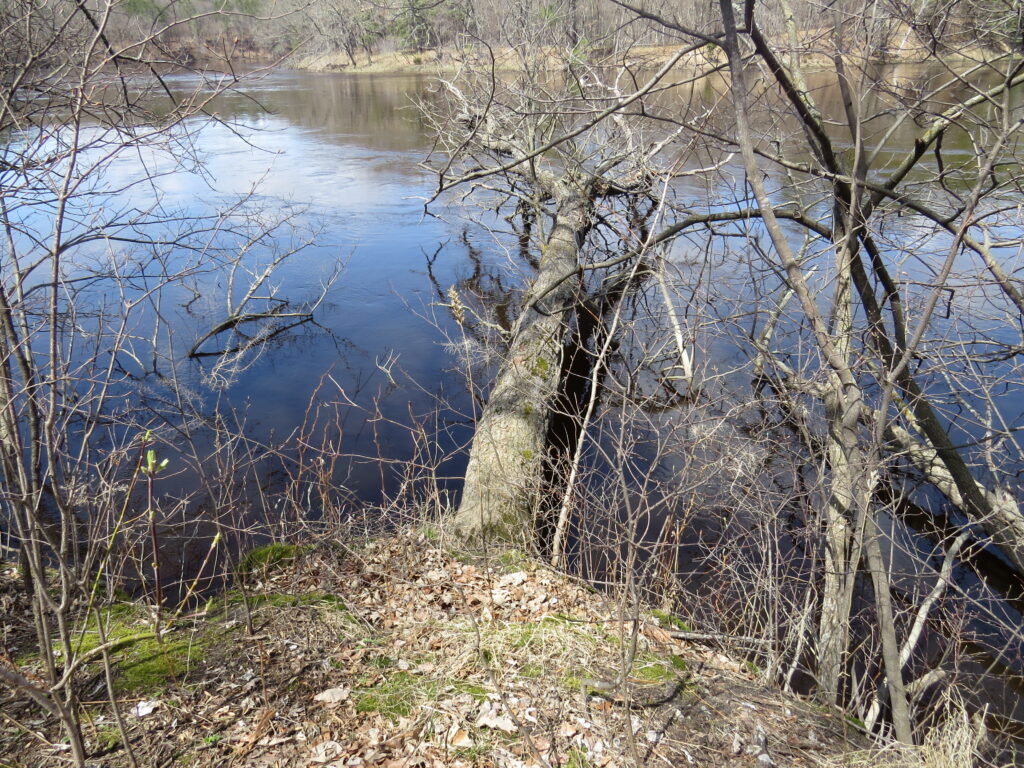
At the base of the tree was a Garter snake stretched out in a patch of sunlight. The wind was cool from the northwest, so we were all enjoying the sun!
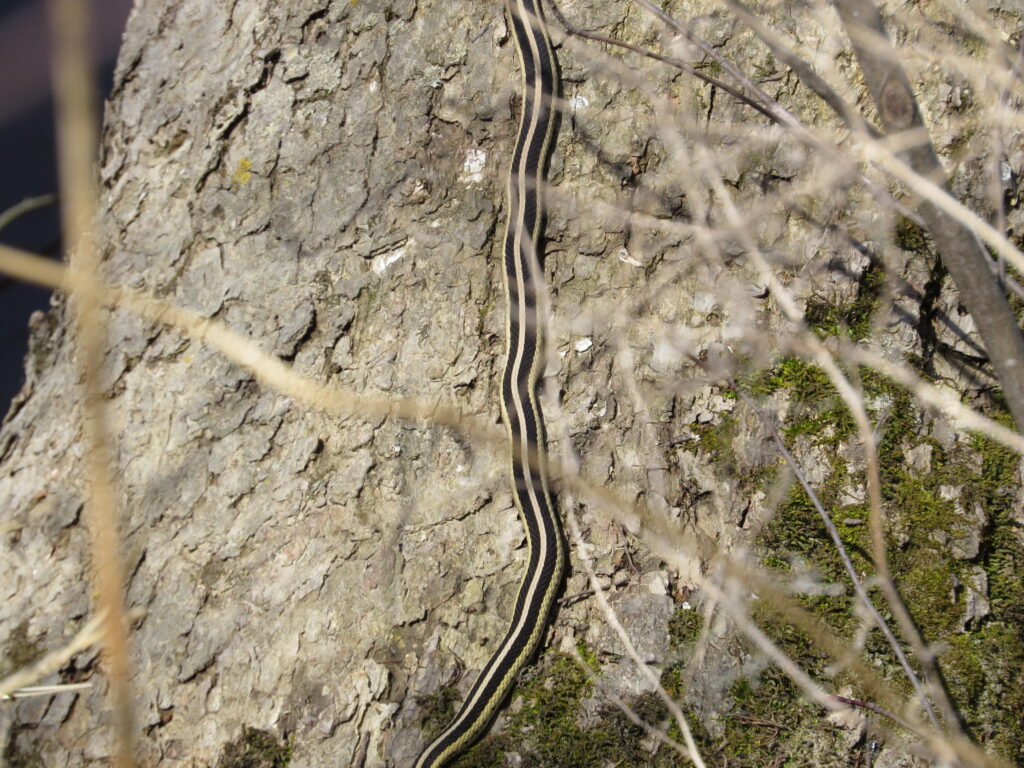
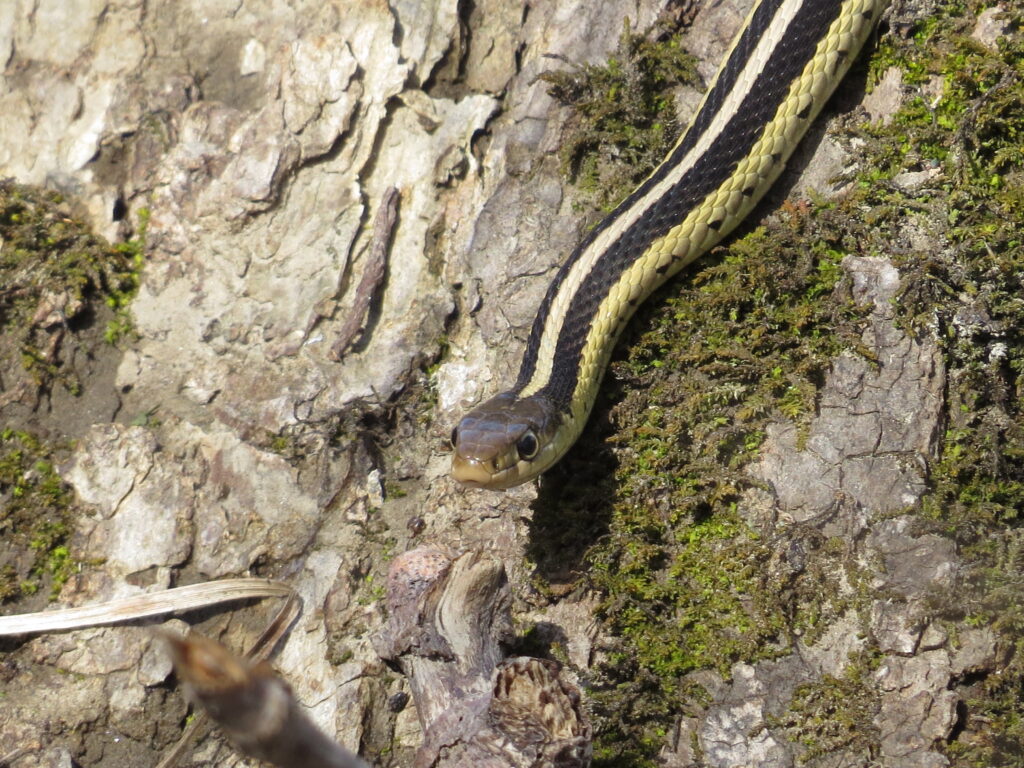
We tried another trail from the campground that connected to the Paul Bunyan State Bike Trail. We successfully navigated a low spot that had wetlands on either side. The Spring Peepers were singing loud and strong—it sounded like a million of them! But I could not spot a single one of the singers as I zoomed and scanned the marsh.
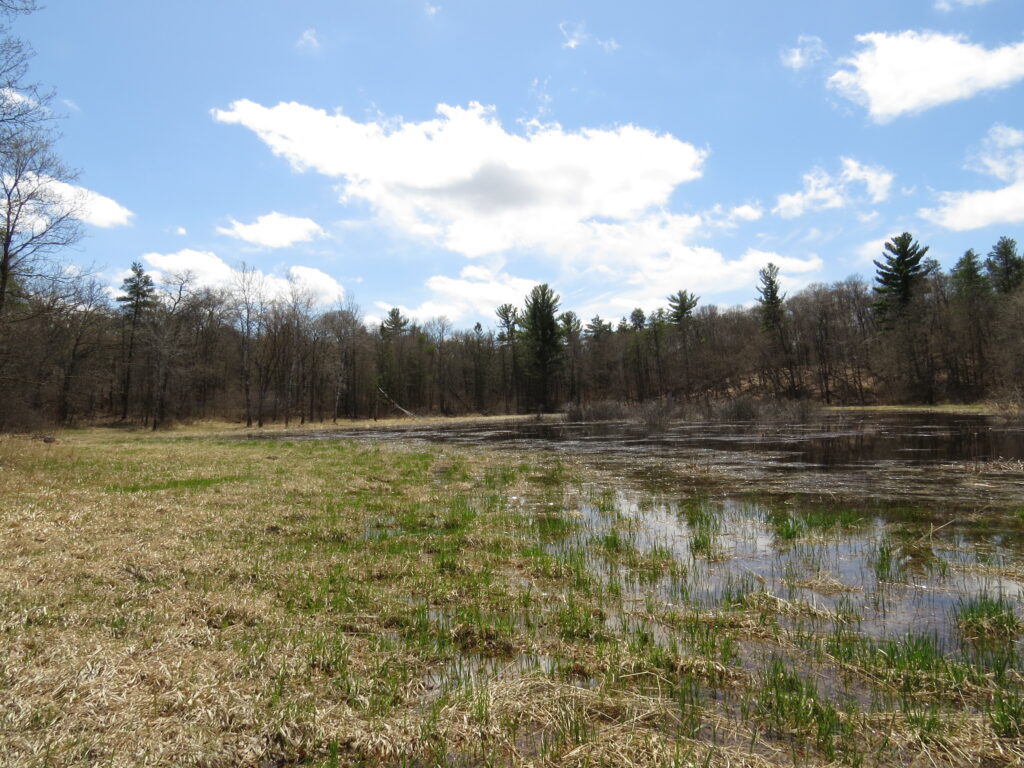
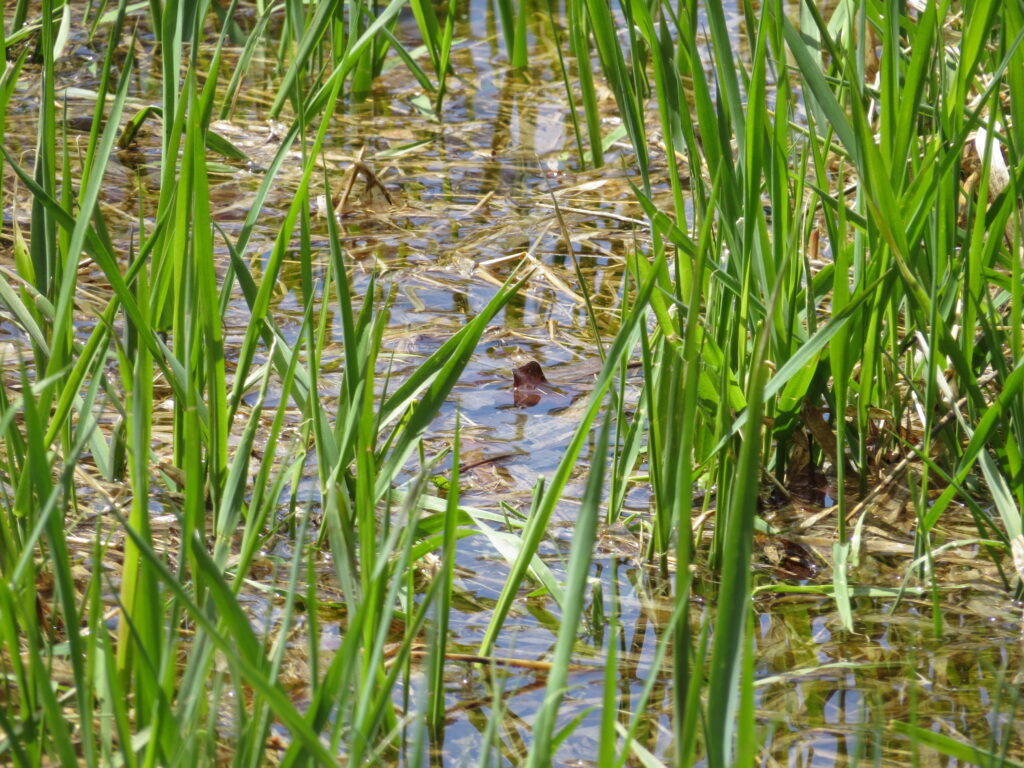
We hiked on the bike trail up on the ridge for a little while but knew we wouldn’t be able to loop around on the trail by the River, so once again we turned around. The valley below held the flood waters that spanned a half a mile or so from the bridge we couldn’t cross.
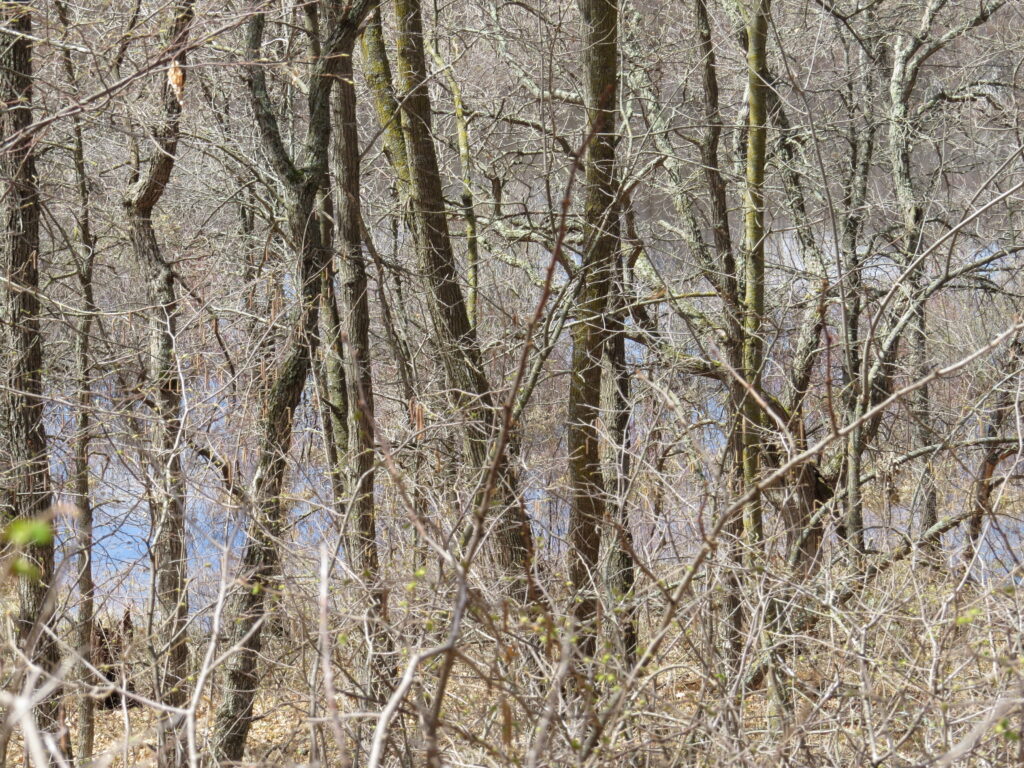
We took a trail that ran parallel to the flood waters to see how far we could go. Willow blossoms were perches for Red-winged Blackbirds, and trees that literally could not stand another flooding tipped and fell into the water.
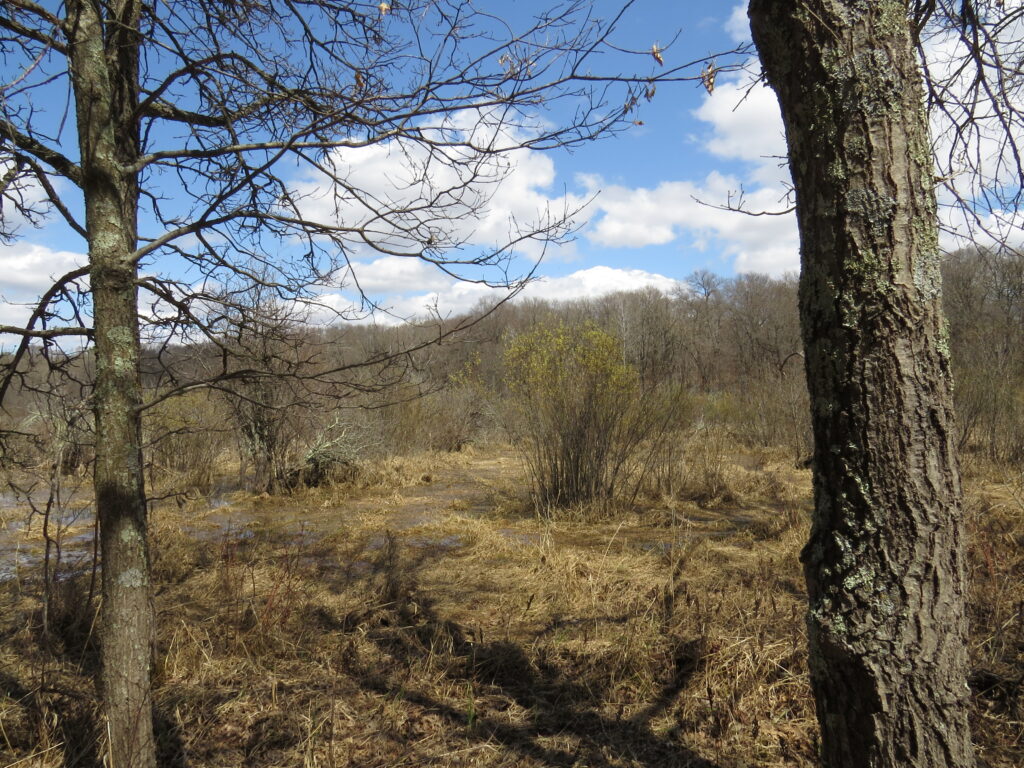
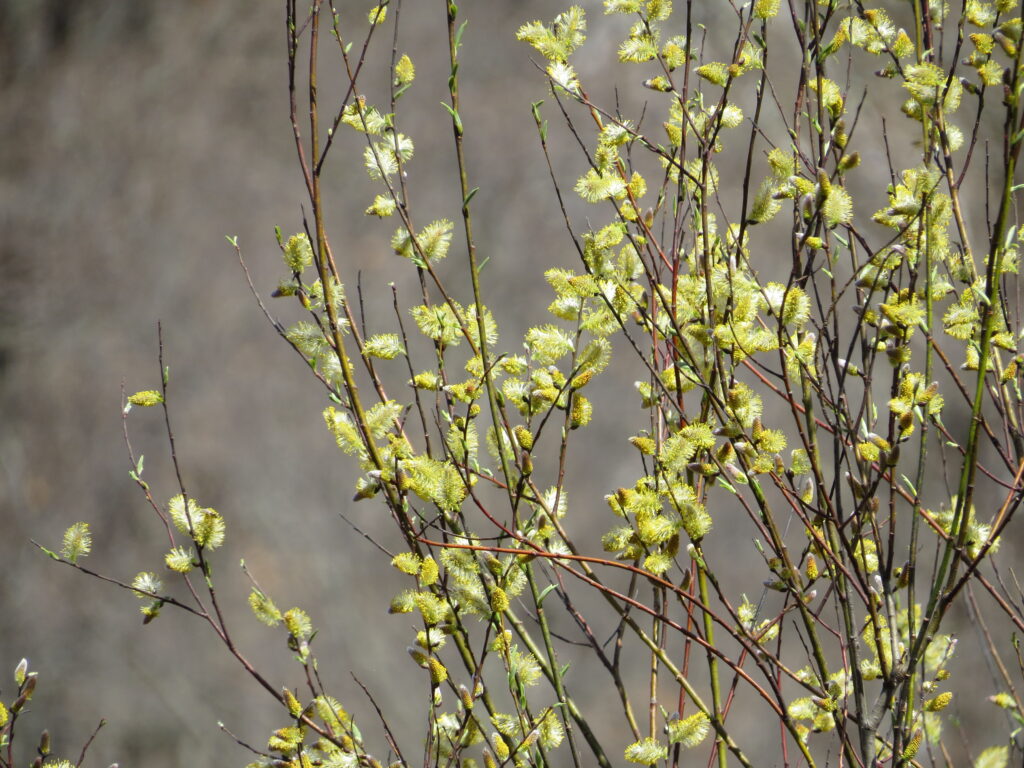
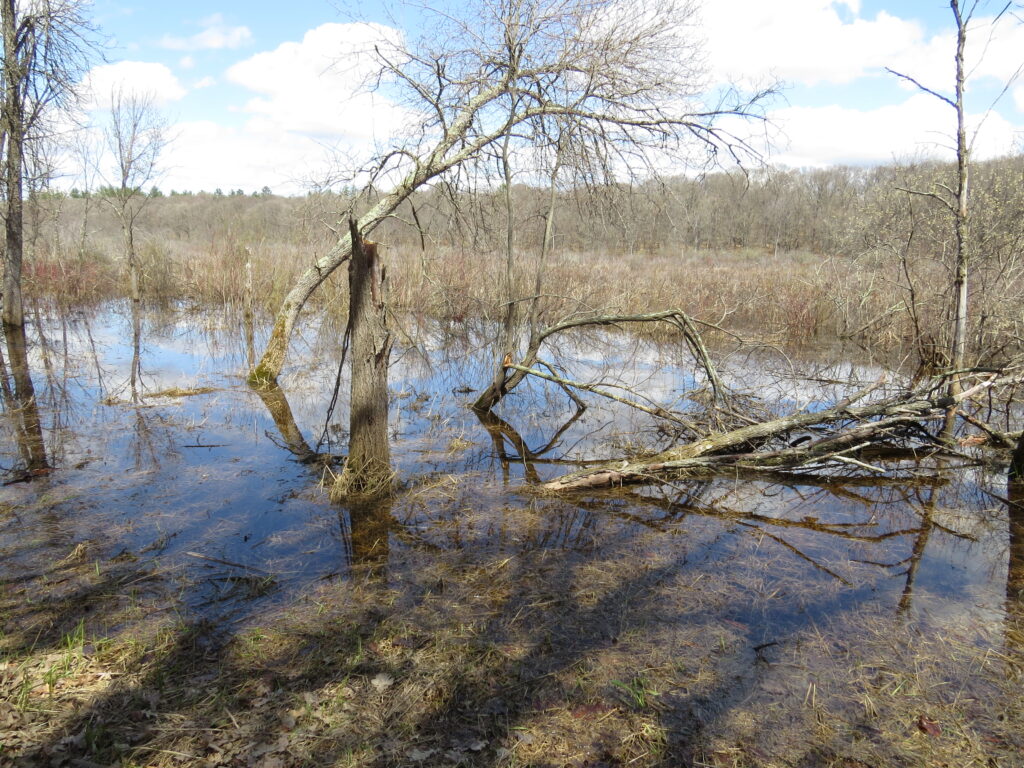
Then in the brush of Willows, Red-twigged Dogwoods, and old, exploded Cattails, I saw the ‘eye of the needle’ embodied in a fallen log and its reflection. Anyone who has threaded lots of needles would recognize that shape.
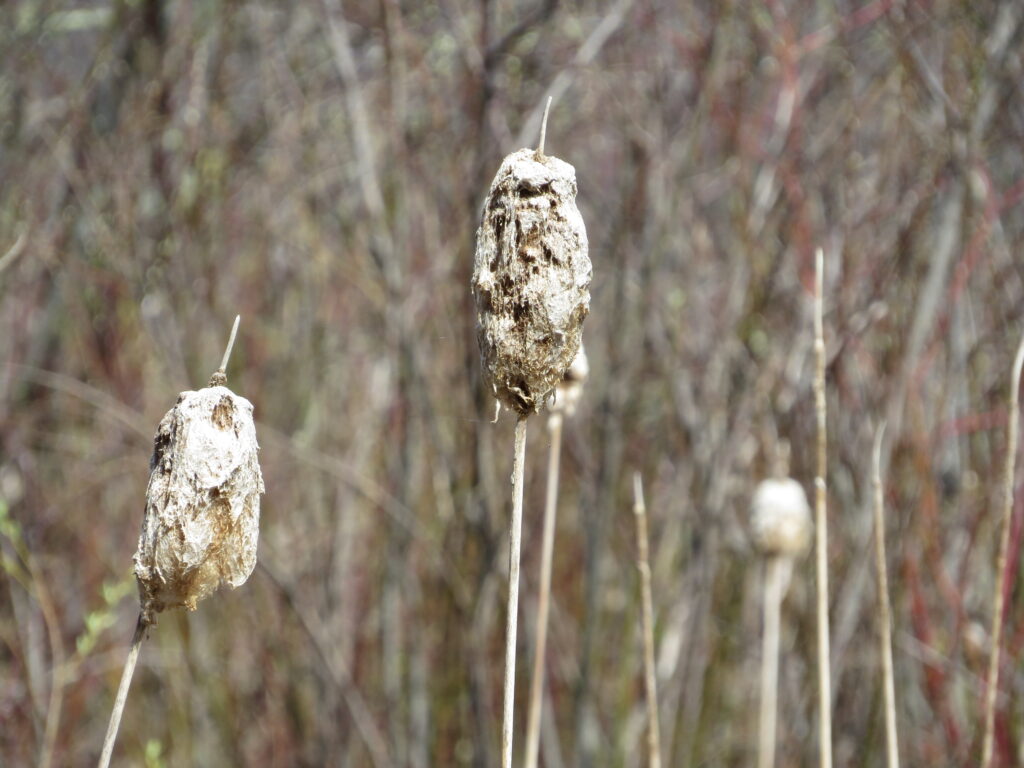
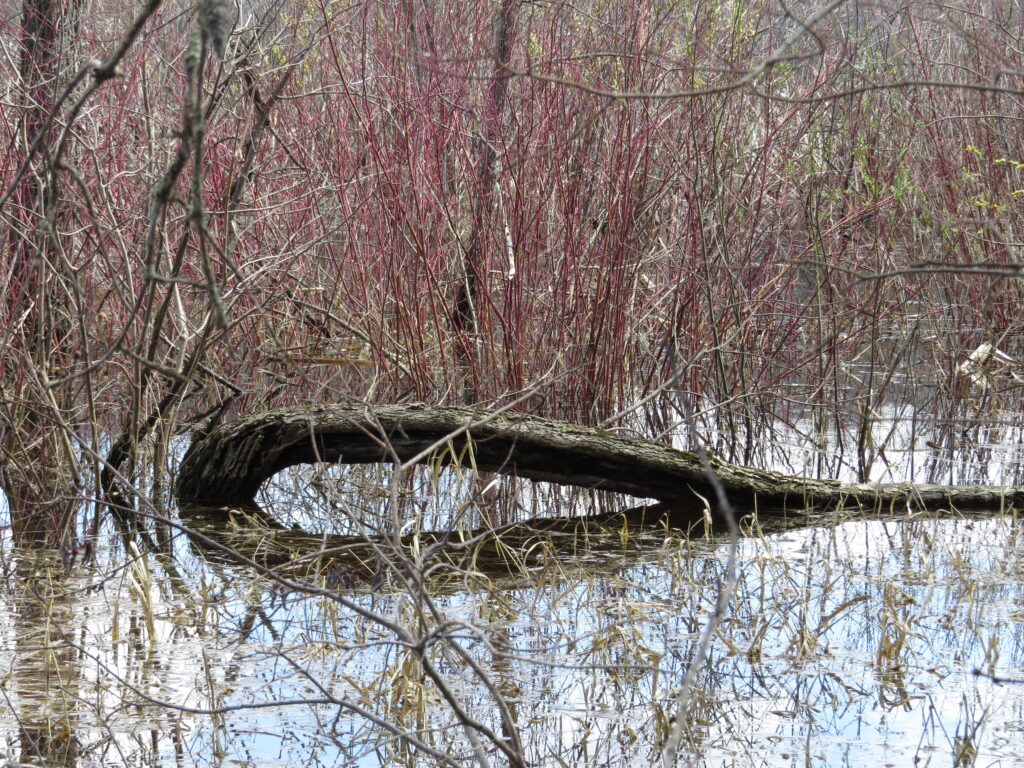
The valley was vast when viewed from the reflections of the flood waters—it was another natural place that accepted the extra Spring water from the Mississippi River. I wondered how many places along the 2,340 miles of the Mighty Mississippi have been the overflow areas for all these millennia.
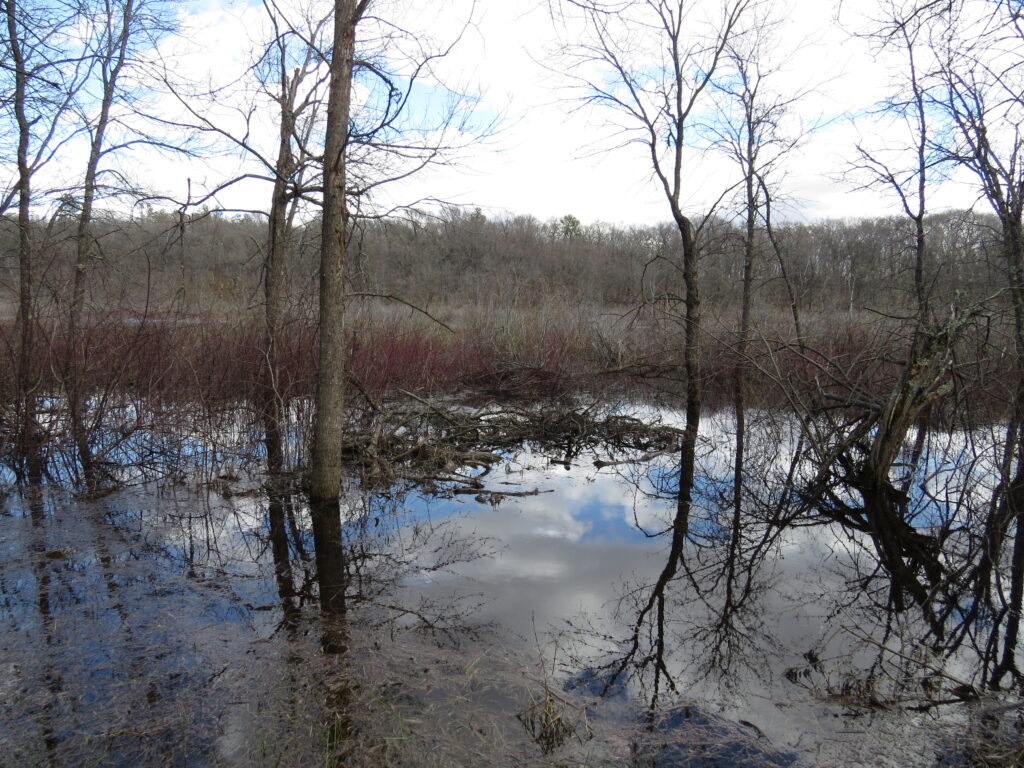
We hiked up the ridge cross-country to the campground when the trail became covered with water.
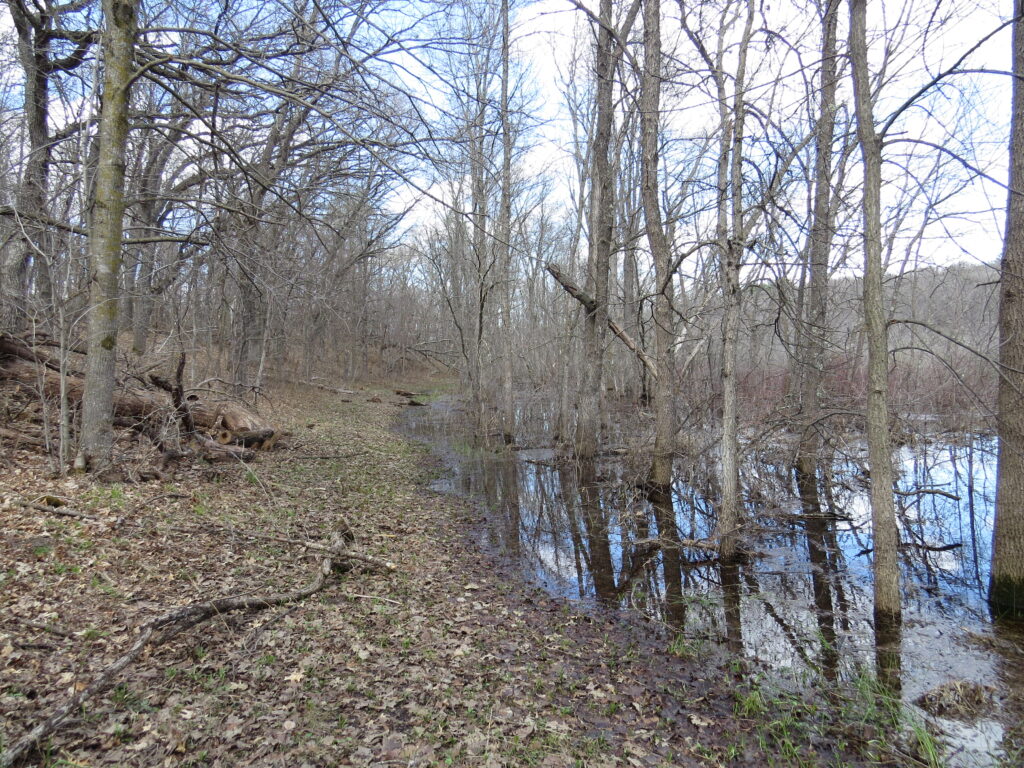
We drove to the south trails parking lot to see what the River was doing there. It is where the Crow Wing River meets the Mississippi River as they merge around the island of Crow Wing.
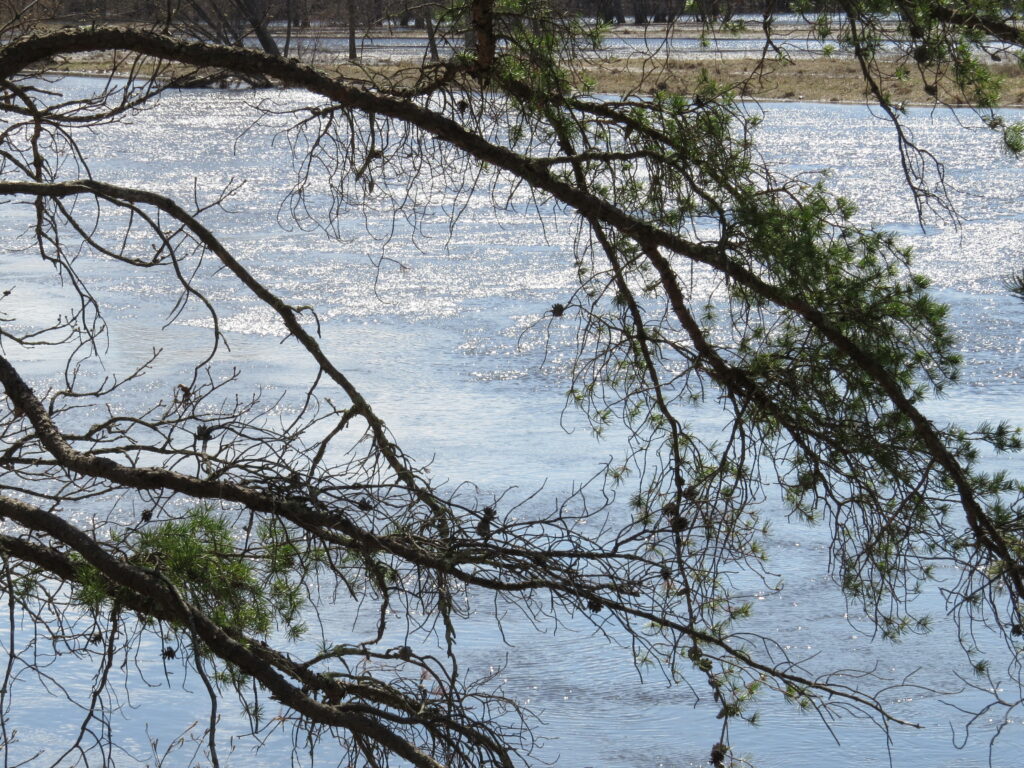
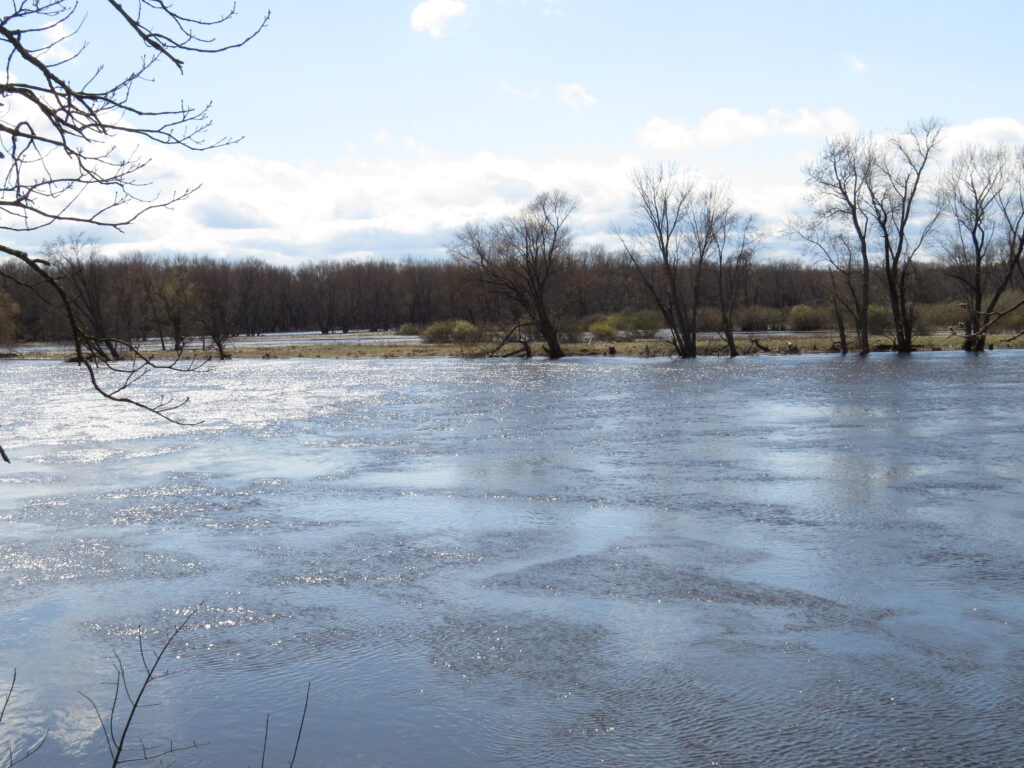
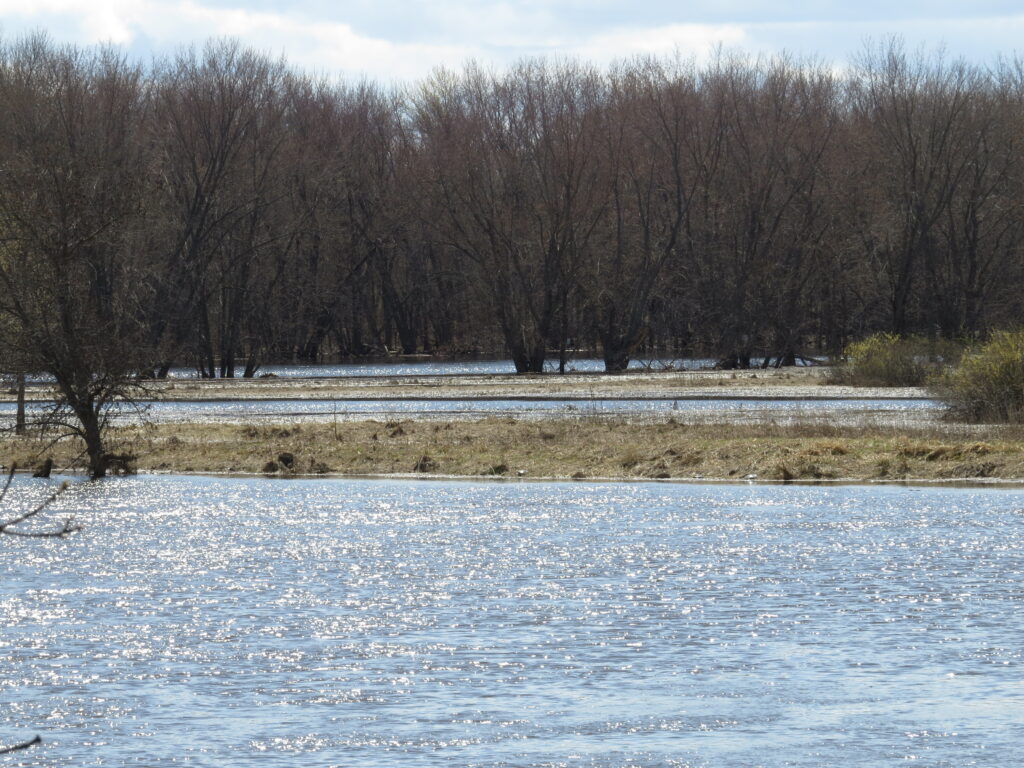
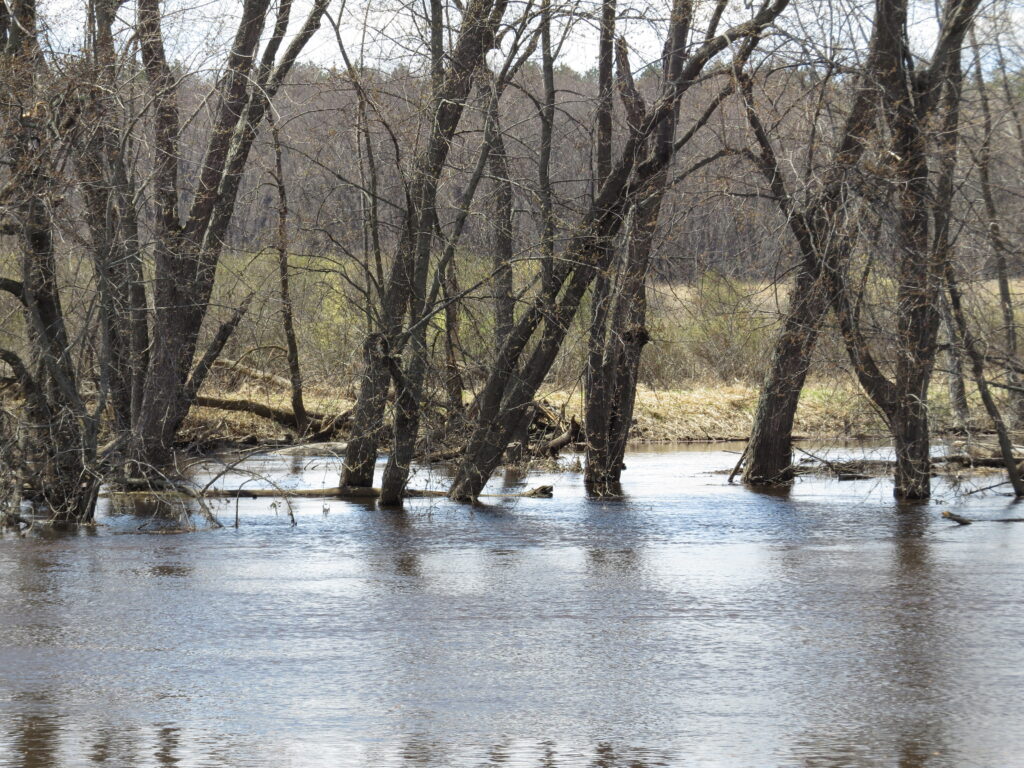
This convergence of high water from two rivers takes over the lowlands on the peninsula that is circled by the Red River Oxcart Trail. The trails were blocked in two directions, not far from the old townsite.
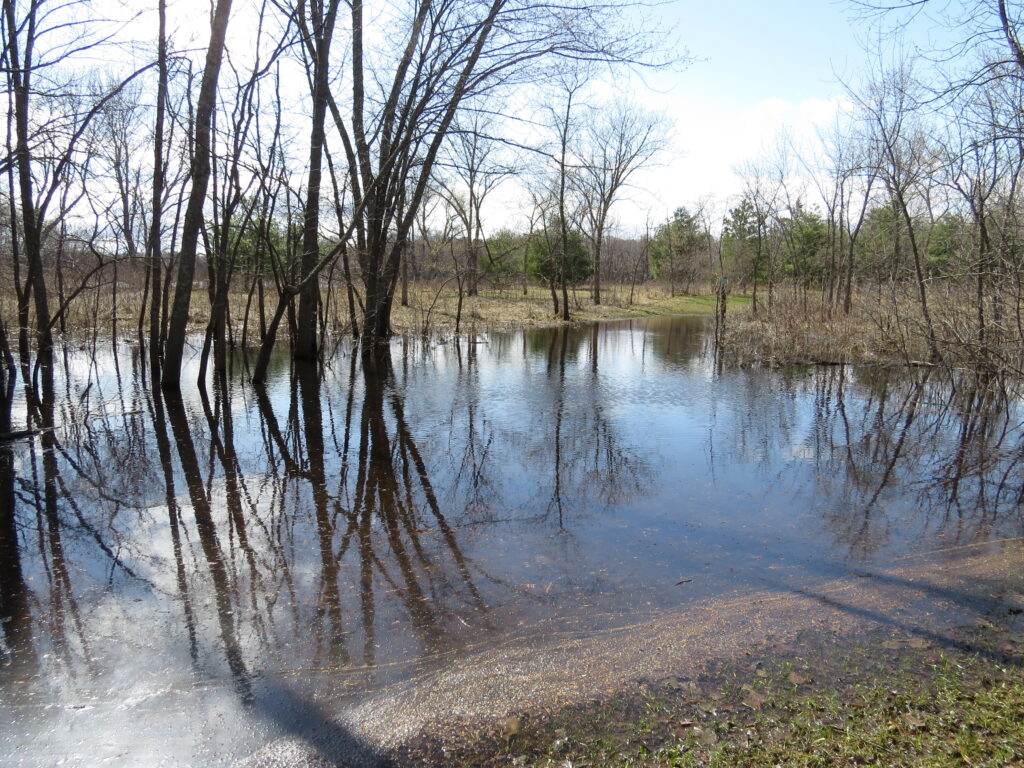
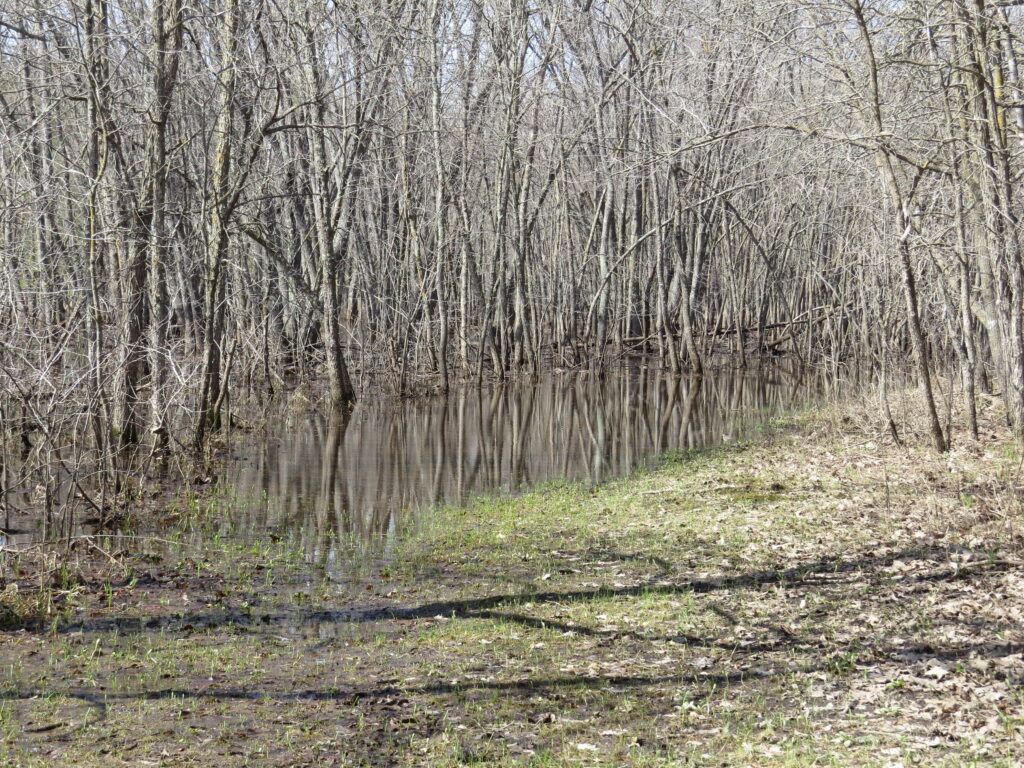
But the waters had receded from their highest mark, leaving behind a mat of debris.
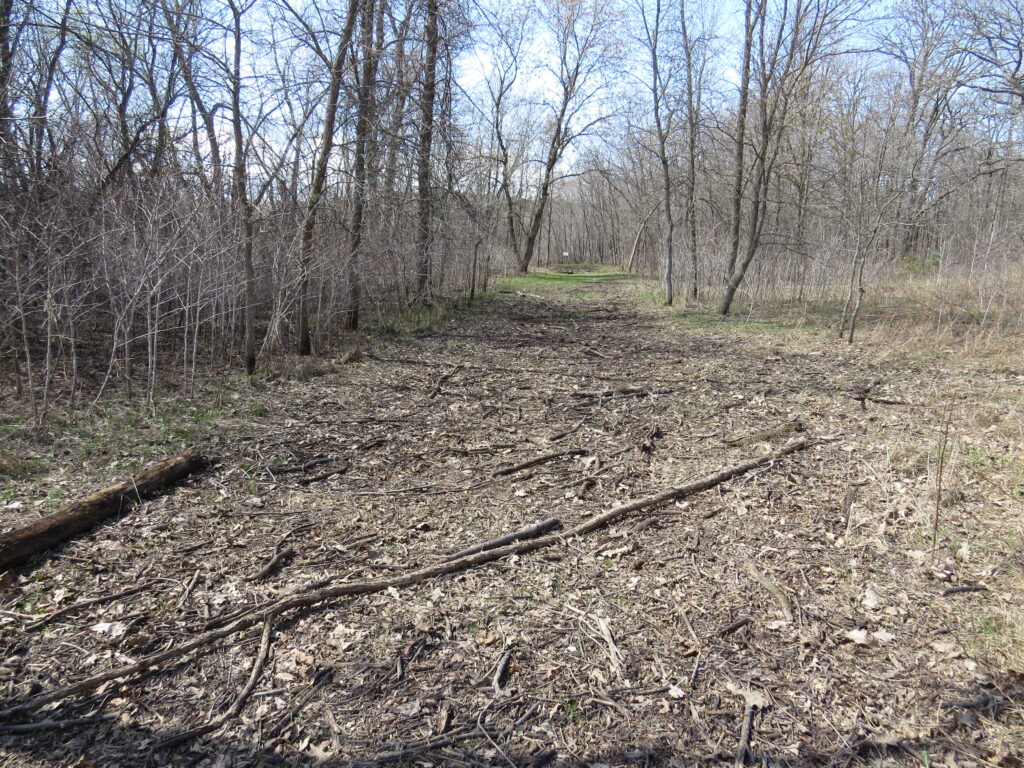
So we headed for higher ground again, above the old townsite, above the flood waters, into a peaceful, sun-dappled pine forest. It seemed like a good place to stop and rest and breathe in the wonderful pine smell.
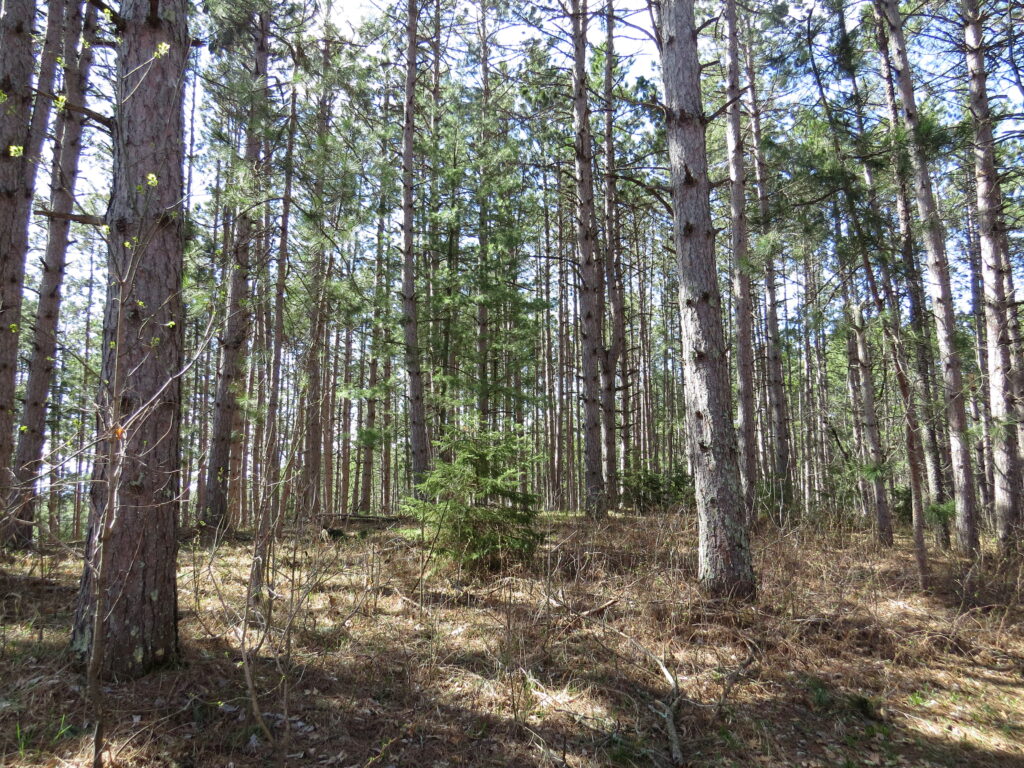
Threading the needle, besides the literal meaning, is defined as skillfully navigating between conflicting forces or interests; to find harmony or strike a balance; to find a path through opposing views. In football and other sports, it means throwing or hitting a ball through a narrow gap, all of which take an abundant amount of practice and dedication. On our hike, we were trying to find a path through the woods but were stymied in almost every direction by Mother Nature’s floodwaters. Even the bridge of connection had been washed away. Sometimes the power differential determines the path (and therein lies much of ‘the problem’). Conflict is the same way, despite my desire for fairness and mutual cooperation in identifying and solving a problem. Redeeming conflict may not work with those who have no desire for redemption. In facing the flood, we backtracked and tried again and again. We took the high ground to find peace for ourselves. We were happy with our day regardless of the setbacks. Redemption is the act of making something better or more acceptable. We can all do conflict better when we know better and dedicate ourselves to harmony. We can be perennial pioneers pushing towards a better life with our protective capes, sunny faces, and the ever powerful grace and mercy of God.
Not receiving the wonderful photos that I know you are sending, neither on my IPAD or my IPhone emails
Hi Elaine, I have had other people say the same thing has happened to them at certain times. I know it takes some time for the photos to load–maybe try at another time to see if it works. Also, if you click the title of the post, I think it will take you to the website which may ‘show up’ better than the email of it. Hope that helps! Thanks for reading!
I fell in love with the last three sentences.😍